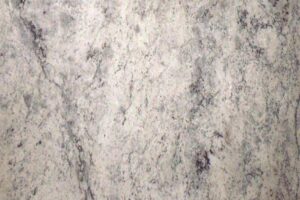I’ll get straight to the answer to the question “Do You Have to Sand Between Coats of Polyurethane on Floors?”
The answer, of course is “it depends.” (Ugh, doesn’t that suck, now you have to keep reading!)
But before you keep reading the FTC requires me to say that this post has affiliate links. This means I make a small commission if you purchase from clicking on a link below with no increase in cost to you. I truly put hard work into each and every post and want to give you valuable information, links are here for your convenience. My links aren’t just to lead you somewhere to make a buck, I promise they’re useful. And hey! That’s one way us bloggers make money for our blog… and I absolutely, POSITIVELY, do not pimp out my blog. What I post about is stuff I either actually own and love or would LOVE to purchase for any one of our thousands of renovation projects!
I’ll start with the answer most of you probably want to hear and that’s no! No, you do not always have to sand between coats of polyurethane on floors! But, and it’s a big but (I like big butts and I cannot lie…) you have to use a polyurethane that is specially made to not need sanding between coats! (Um, how cool is that?)
Our go to polyurethane for never having to sand between coats is Minwax Super Fast Drying Polyurethane For Floors*. You don’t have to sand between coats of poly as long as you get the next coat on within 12 hours – which means yes, sometimes you will be up at really strange hours coating yours floors with poly and your neighbors may wonder if you’re up to no good.
*As a side note, this product did not receive rave reviews on Amazon. However, we have been using it for YEARS and if you properly prepare your floors and follow the manufacturers instructions on the can AND take a look at some of my tips below, you shouldn’t have many problems. (Keep reading for my “however” on that…)
Tips on Using Minwax Super Fast Drying Polyurethane for Floors
- Do not shake the can!! Only stir, you do not want to mix air bubbles into the can which will then end up in your top coat.
- If you pour the poly back into the container after the first or second coat, it’s best to strain it as you pour (I know how annoying.) Believe it or not, you probably picked up little tiny dust balls or other debris and you do not want that in there the next time you go to use the poly.
- The easiest way to strain the poly is with stocking or pantyhose!!
- If you apply the poly with a lambswool applicator just be aware that it puts it on heavier than other applicators and may need to dry towards the longer timeframe.
- Use a natural bristle brush to get the corners and areas where the applicator won’t fit. This is the one I use and I LURV it so much!!! It’s like my baby and no one else can use it. I even drew cats on it so no one else will even want to use it. True story.
Proper Floor Prep Is Key!
Like I said above, this product didn’t get the absolute best reviews on Amazon but I think a lot of it is because people don’t properly prep the floor. It truly is key to a beautiful refinished hardwood floor.
The biggest takeaway I have learned over the years is to clean up the dust. All of it. Like even the dust you can’t see but is most definitely there! And don’t forget the dust you don’t think is there but is most definitely there.
- Check out this post I wrote about the absolute fiasco that was sanding the hardwood floors in fixer upper 2.
- Read this post about what I learned from the sanding fiasco mentioned above
- And then read this post about how to refinish hardwood floors!
If you do have to sand between coats of polyurethane on floors because you didn’t get to the second coat within the required time frame then that’s a bummer. And now you’ll have to sand the entire floor with 220 grit sand paper and clean all the dust up! Sucks to be you.
Just kidding, but I truly do hate sanding when I don’t have to! But there are times when it’s just not feasible to get the polyurethane down within the required time frame (within 12 hours) to not have to sand. So when that time comes, this sanding pole will save your life (and back!) (Don’t forget 220 grit sandpaper for it.)
However….
I don’t think any of the floors we’ve done with the Minwax Super Fast Drying Floors have ever come out perfect. I’ve always found imperfections later like pinholes or a few air pockets/bubbles here and there. But it truly doesn’t bother me because I know floors never stay in perfect shape to begin with, so why go to all that extra expense in labor and material to make something perfect only to have it ruined by pets, kids and even us adults!
However, Mr. Stone Head has used this product before and I am interested in trying it for our next home (fingers crossed it has really old hardwood floors I can refinish!) Truth be told I’m a little mad we didn’t know about the Bona Traffic HD Polyurethane for the fixer upper we’re about to move into because from my research it seems as though it’s an extremely durable polyurethane… like commercial grade durability! – Think restaurants, stores, etc. That would have been swwweeeeettttt with a dog!
So that’s pretty much all I have to say on sanding between coats of polyurethane! You don’t have to do it if you buy this poly from Minwax and get a second coat on within 12 hours. You do have to sand between coats of polyurethane on floors (usually with 220 grit sandpaper) with most other polyurethanes.
I truly hope that clarifies a few things for people… and if not, let me know!
Subscribe!
Be sure to reach out on Instagram, Facebook or Pinterest and subscribe to this blog to be notified when new blog posts are up – who would want to miss those!?! (And if you’re a fellow blogger submit your website! I love finding new blogs to read, pin and share!!! It’s so hard to find a good quality blog nowadays, you know what I’m saying?)
[contact-form-7 id=”3255″ title=”Contact form 1″]






